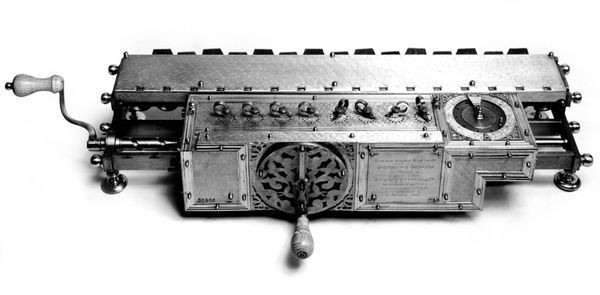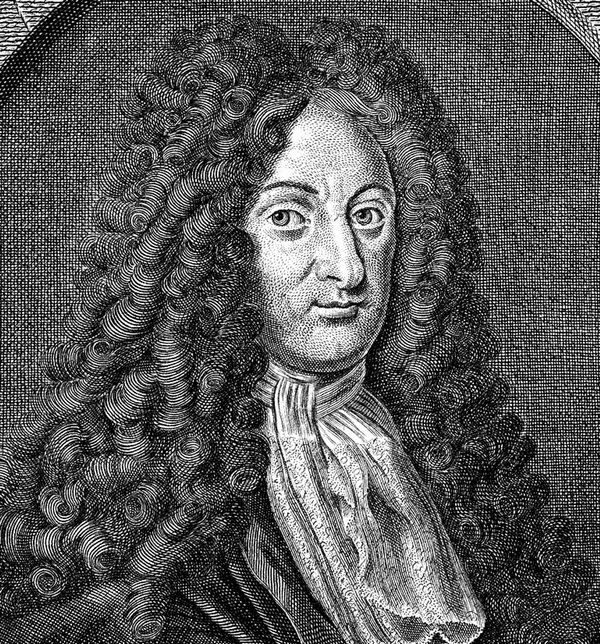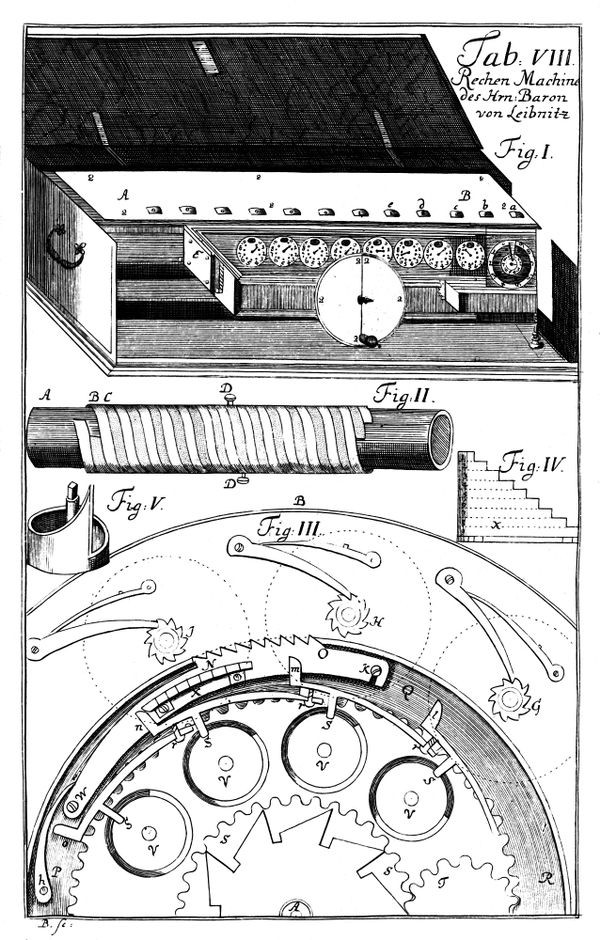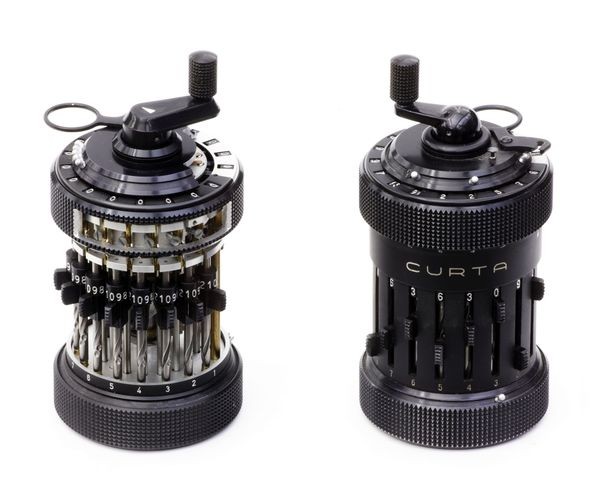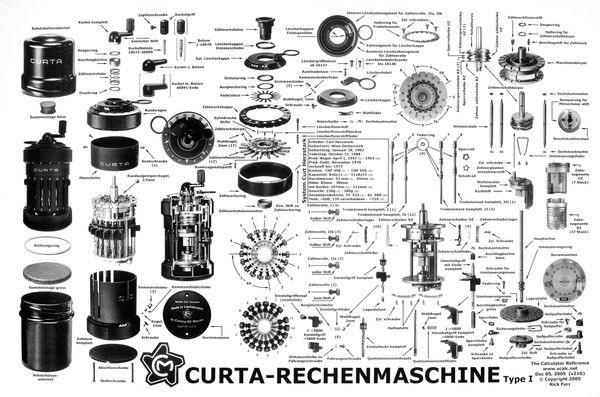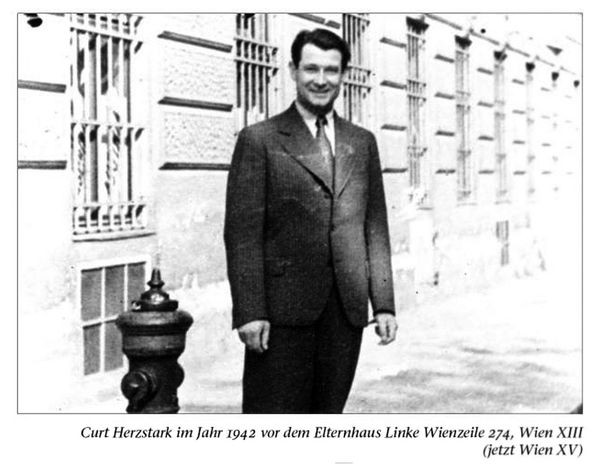The Leibniz Step Reckoner and Curta Calculators
A Leibniz Stepped Reckoner calculator
In 1673, Leibniz built the first true four-function calculator. His unique, drum-shaped gears formed the basis of many successful calculator designs for the next 275 years, an unbroken record for a single underlying calculator mechanism. Leibniz built several versions of the Stepped Reckoner over about 45 years. Only one survives today.
The Leibniz Step Reckoner
Gottfried Leibniz’s 1673 “Step Reckoner” introduced a design innovation that enabled a single gear to represent any digit from 0 to 9 in just one revolution. This stepped-drum approach dominated calculator design for the next two centuries.
Gottfried Leibniz
Leibniz made many important contributions to mathematics, physics, logic, and philosophy, but he died in obscurity.
View Artifact DetailPosthumous illustration of Stepped Reckoner mechanisms
For over 200 years, illustrators often depicted the Leibniz mechanism, which stimulated many subsequent inventors.
View Artifact DetailCurta Calculator
The hand-cranked Curta was popular with sports car rallyists even after electronic calculators were available. The exquisite mechanism is still studied. There are several beautiful animations on the web, and a registry of current owners.
View Artifact DetailCurta Calculators
While imprisoned in Buchenwald concentration camp in World War II, Curt Herzstark refined his pre-war design of a calculator featuring a modified version of Leibniz’s stepped drum. After the war, Herzstark’s Curta made history as the smallest all-mechanical, four-function calculator ever built.
Curta calculator parts, mid-1950s
A Curta calculator has more than 600 parts. The factory used special tools to build them, and an owner foolish enough to take one apart usually could not reassemble it.
View Artifact DetailCurt Herzstark in Vienna
Herzstark worked in his family’s manufacturing business until he was sent by the Nazis to the Buchenwald concentration camp in 1943.
View Artifact Detail